What is The Best Roof for Austin?
As an Austin and Central Texas roofing expert with over three decades of experience, we’ve installed, repaired, and inspected just about every type of roof out there. We’ve seen firsthand which materials hold up well—and which ones leave property owners with costly regrets. This blog series is designed to help Texas homeowners and business owners alike understand their roofing options and make informed decisions.
If you own a home or commercial property in Central Texas, you already know that your roof is one of your biggest investments. With scorching summers, unpredictable hailstorms, and high winds, your roof needs to be tough enough to handle it all. But when it’s time to repair or replace your roof, how do you know which material is the best roof for Austin?
Should you choose asphalt shingles, metal roofing, or a commercial-grade TPO system? Which option will stand up to Texas weather while keeping long-term costs low?
Factors to Consider When Choosing a Roofing Material
Before we dive into the different types of roofing, let’s go over the key factors that should influence your decision. Whether you’re choosing a roof for a home, office, retail space, or warehouse, the same principles apply.
1. Cost vs. Long-Term Value
Price is always a factor, but it’s not just about the upfront cost—it’s about long-term investment.
✔ Initial installation cost – How much does the material cost to install?
✔ Lifespan – Will it last 10 years or 50?
✔ Maintenance costs – Some materials require frequent upkeep, while others are low-maintenance.
✔ Energy efficiency – Reflective materials like metal and TPO can reduce cooling bills in Texas heat.
2. Durability & Weather Resistance
Hail, wind, and UV exposure can wear down a roof quickly. Choosing a durable material is key to avoiding costly repairs.
- Hail Resistance: Metal roofing and high-end impact-resistant shingles hold up best.
- Wind Resistance: Commercial flat roofs (TPO, EPDM) are designed for strong adhesion, while metal and premium shingles resist uplift.
- Heat Resistance: Light-colored or reflective materials, like TPO and standing seam metal roofs, help reduce energy costs.
3. Aesthetics & Curb Appeal
The right roofing material can enhance your home’s curb appeal or make your business property stand out.
- Homes: Asphalt shingles, metal, slate, and tile all offer different styles.
- Commercial Properties: TPO is common for flat roofs, while metal roofing is gaining popularity for modern commercial buildings.
4. Installation Complexity
Some roofing materials are quicker and simpler to install, while others require specialized expertise.
- Asphalt shingles – The easiest and fastest to install.
- Metal roofing – Requires precision but offers superior durability.
- TPO/EPDM – Used on flat roofs; installation requires heat-welded seams for waterproofing.
5. Environmental Impact & Energy Efficiency
If energy savings or sustainability are priorities, consider:
🌞 Metal roofs that reflect heat and last longer.
🌱 TPO roofing that offers superior energy efficiency for commercial buildings.
🌳 Recycled or composite roofing materials that provide eco-friendly options.
Overview of Common Roofing Materials
Now that we’ve covered what to consider, let’s look at some of the most popular roofing options for both residential and commercial properties. In the coming posts, we’ll break each of these down further, discussing pros, cons, costs, and best use cases.
🏠 Asphalt Shingles: The Most Popular Choice for Homes
- The most affordable and widely used roofing material.
- Comes in 3-tab, architectural, and luxury shingles.
- Also popular for commercial installations
- Lifespan: 15-30 years, depending on quality.
- Best for: Property owners who want a cost-effective, durable option.
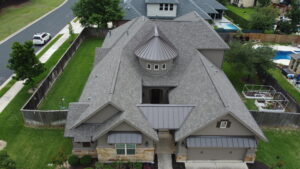
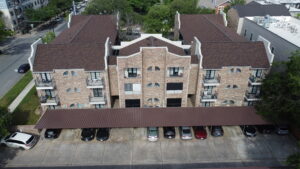
🔩 Metal Roofing: Durable for Homes & Businesses
- Available in standing seam, exposed fastener, and metal shingles.
- Used for both residential and commercial applications.
- Lifespan: 40-70+ years with proper maintenance.
- Best for: Property owners wanting long-term durability.
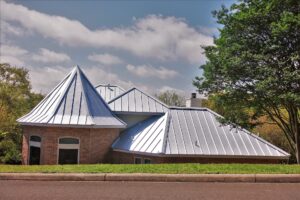
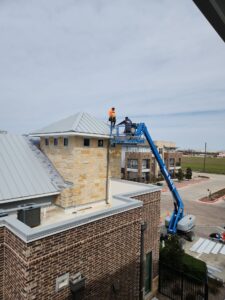
🏢 Commercial Roofing: TPO, EPDM, and Modified Bitumen
- TPO (Thermoplastic Polyolefin): Energy-efficient, durable, and reflective.
- EPDM (Rubber Roofing): Affordable and flexible for temperature changes.
- Modified Bitumen: Strong, waterproof, and great for commercial properties with foot traffic on the roof.
- Best for: Offices, warehouses, and commercial buildings with flat roofs.
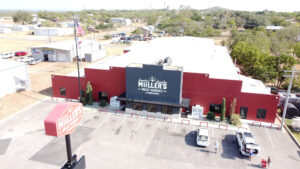

🏛 Specialty Roofing: Slate, Clay, and Wood Shakes
- Slate Roofing: 100+ year lifespan, but heavy and expensive.
- Clay Tiles: Fire-resistant and common in Mediterranean-style homes.
- Wood Shakes & Shingles: Natural beauty but require regular maintenance.
- Best for: High-end homes or unique architectural designs.
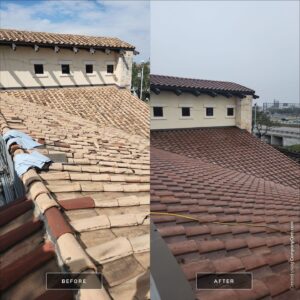
Which Roof is Right for You?
Whether you’re replacing a residential roof or upgrading a commercial property, the best choice for Austin and Central Texas roofs comes down to durability, cost, and weather resistance.
If you’re in Georgetown, Fredericksburg, Dripping Springs, or anywhere in the Texas Hill Country, you need a roof that can handle extreme heat, hail, and high winds. Whether you’re considering an affordable shingle roof, an ultra-durable metal roof, or an energy-efficient TPO system, understanding your choices is the first step.
In the next posts of this series, we’ll take a deep dive into each roofing material, breaking down the pros and cons to help you make the best decision. Stay tuned!
🚨 Need expert advice on your roofing options? Whether you’re planning a replacement or just want an inspection, contact THR Roofing Solutions at 512-431-6775 or email THR@THRroof.com. We’re here to help you find the best roofing solution for your home or business!
What’s Next in the Series?
📌 Next Blog: Asphalt Shingles – Are They the Best Choice for Your Roof?